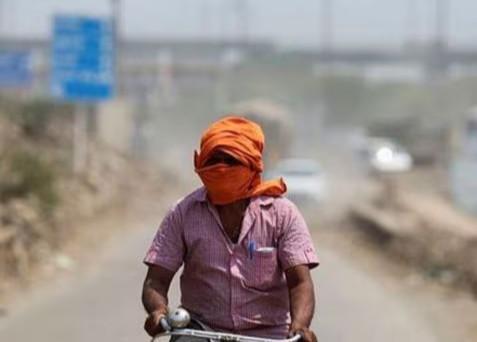
Extreme Heat Endangering Health & Productivity of Workers: Report
As the world grapples with the increasing impact of climate change, a recent report by the World Health Organisation (WHO) and the World Meteorological Organisation (WMO) has sounded the alarm on the extreme heat endangering the health and productivity of workers worldwide. The report highlights the alarming effects of rising temperatures on worker productivity, and warns that vulnerable populations such as children, the elderly, and manual workers in agriculture and construction sectors are particularly at risk.
According to the report, worker productivity drops by 2-3% for every degree above 20°C. This may seem like a minor decline, but it can have significant consequences on the overall economy and society. The report cites examples of countries like Japan and the United States, where heat-related productivity losses have been estimated to be in the billions of dollars.
The health risks associated with extreme heat are equally concerning. Heatstroke, dehydration, and kidney dysfunction are just a few of the potential health consequences of working in hot temperatures. Manual workers in agriculture, construction, and other sectors are particularly vulnerable to heat-related illnesses, as they often lack access to adequate shade, water, and cooling facilities.
The report highlights the disproportionate impact of extreme heat on vulnerable populations. Children and the elderly are more susceptible to heat-related illnesses due to their age, and may not be able to adapt to changing environmental conditions as easily. In developing countries, where access to healthcare and cooling facilities may be limited, the risks are even greater.
Agricultural workers are another group that is disproportionately affected by extreme heat. Many agricultural workers are forced to work outdoors, often in temperatures that exceed 40°C, without access to adequate shade or cooling facilities. Heat-related illnesses can have significant consequences for agricultural productivity, as workers may be unable to perform their duties or may require extended periods of time off to recover.
Construction workers are also at risk, as they often work outdoors in hot temperatures, with limited access to shade or cooling facilities. Heat-related illnesses can be particularly hazardous in this sector, as workers may be exposed to hazardous materials and equipment while recovering from heat-related illnesses.
The report highlights the need for employers and governments to take action to protect workers from the impacts of extreme heat. This can include providing access to cooling facilities, ensuring that workers have adequate breaks and time off to rest and recover, and implementing heat-related illness prevention and response plans.
In addition to the health and productivity impacts, the report also highlights the social and economic consequences of extreme heat. Heat-related illnesses can have significant impacts on workers’ families, as they may be unable to provide for their loved ones or may require extended periods of time off work to recover. The report also notes that heat-related illnesses can have significant economic impacts, as workers may be unable to perform their duties or may require extended periods of time off work to recover.
The report’s findings are a wake-up call for employers, governments, and individuals to take action to protect workers from the impacts of extreme heat. By taking proactive steps to prevent heat-related illnesses, we can help to ensure that workers are healthy, productive, and safe.
Source:
https://repository.inshorts.com/articles/en/PTI/45d9bd2d-ff57-417c-9e5f-831344bb34b0






